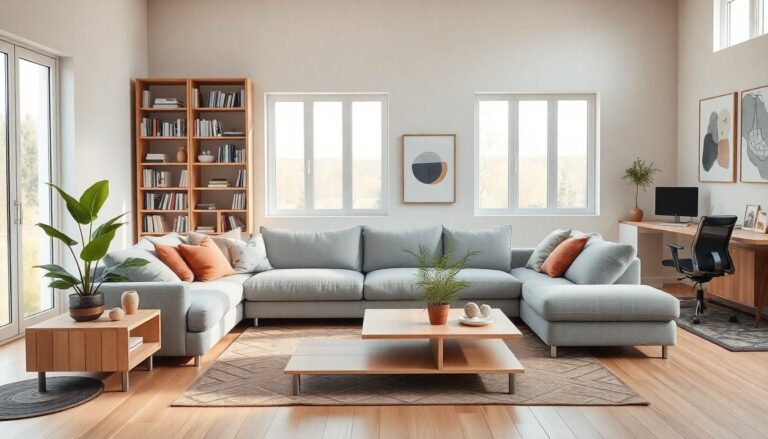Argomenti trattati
Life is a journey marked by various stages, and our living spaces should evolve with us. Designing a home that can adapt and grow through different phases is a common challenge. To explore this topic, expert designers provided their insights on creating flexible and functional environments suitable for all ages.
Understanding the importance of adaptability
Home design is often perceived as static. However, our needs change as we progress through life. Effective home design embraces adaptability, enabling seamless transitions between life phases. For example, a young couple may prefer an open floor plan for entertaining, while a family with children might benefit from designated play areas and additional storage.
Designing for families
For families, the home must serve as a sanctuary for both adults and children. Designers recommend using multi-functional furniture to optimize space. A sofa bed in the living room can provide a cozy spot for family movie nights and serve as a guest bed for visitors. Built-in storage solutions can help keep toys and games organized, promoting a tidy environment that evolves as children grow.
Creating separate zones can further enhance functionality in family homes. Designating areas for relaxation, play, and work helps maintain harmony and reduce chaos. A flexible layout allows for easy rearrangement of furniture and spaces as family dynamics change over time.
Preparing for aging in place
As we age, our homes should remain places of comfort and safety. Designers emphasize the importance of planning for aging in place, ensuring homes remain functional as physical needs evolve. Simple modifications, such as wider doorways, slip-resistant flooring, and accessible bathroom fixtures, can significantly enhance living conditions for older adults.
Creating a welcoming environment
To foster a welcoming atmosphere, consider the psychological impact of color and lighting. Warm hues can evoke feelings of safety and tranquility, which are particularly essential for older individuals. Adequate lighting improves visibility and can also influence mood. Designers recommend combining natural light with layered artificial lighting to create an inviting ambiance.
Incorporating smart home technology can greatly enhance safety and convenience for older adults. Devices such as smart locks, automated lighting, and voice-activated assistants offer peace of mind and independence, allowing seniors to maintain their lifestyle while ensuring security.
Adapting to changing lifestyles
Life is not static, and neither should our homes be. Whether due to a new job, a shift in family structure, or other lifestyle changes, living spaces should accommodate transitions. Designers highlight the importance of flexible spaces that can transform in function; for instance, a home office can easily convert into a guest room or recreational area.
Incorporating personal elements
A home reflects its inhabitants, and integrating personal touches can enhance its character. Designers suggest considering elements that resonate with personal histories and interests when planning your space. Showcasing family photos, artwork, or heirlooms can personalize your home and foster a sense of belonging.
Moreover, using flexible decor allows for easy changes in the home’s look and feel. Opting for neutral base colors for large items like sofas and walls enables you to switch out accessories and artwork as your tastes evolve.
Home design is often perceived as static. However, our needs change as we progress through life. Effective home design embraces adaptability, enabling seamless transitions between life phases. For example, a young couple may prefer an open floor plan for entertaining, while a family with children might benefit from designated play areas and additional storage.0

